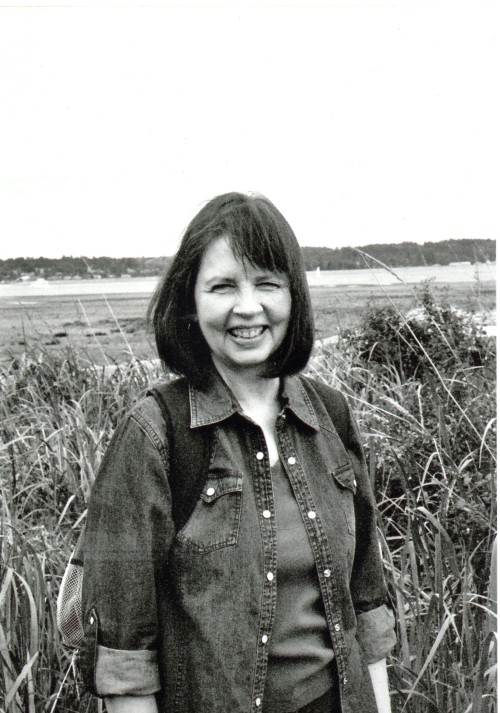SPECIAL EVENT: The Cougar: Beautiful, Wild and Dangerous
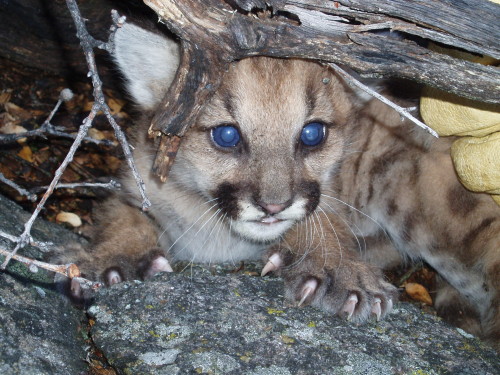
The Cougar: Beautiful, Wild and Dangerous
Author Paula Wild reads and presents, “Sharing the Landscape: Can Humans & Cougars Coexist?”
Saturday, June 7, 2014; 7 pm
Readings Gallery at Village Books, 1200 11th Street, Bellingham
Free!
By Paula Wild
Heavily falling snow covered our footsteps almost as quickly as we made them. The fat white flakes, the forest around us and the arrival of twilight meant visibility was fading fast. And right in front of us, filling with snow as we watched, were the large paw prints of a cougar.
Our pickup was parked a couple of kilometres (about a mile) from the small logging and pulp mill community of Port Alice on northern Vancouver Island, British Columbia. We’d pulled off Highway 30 onto the SE Main, a logging road at the bottom of the hill heading out of town, to retrieve our thermos from the back of the truck. But now, following the tracks into the woods toward a small creek, our thoughts were on cougars. As the snow silently erased the paw prints I peered between the alders and up into their branches with equal measures of apprehension and excitement.
— from The Cougar: Beautiful, Wild and Dangerous, by Paula Wild (Douglas & McIntyre)
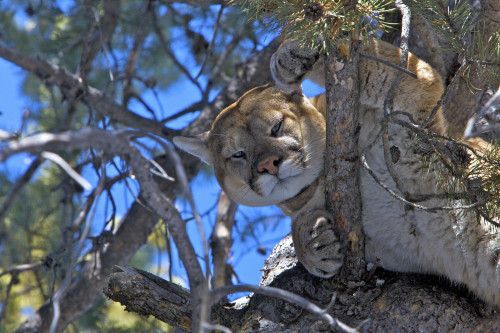 As the widest ranging predator in the western hemisphere, cougars roam from alpine to ocean and favor forested areas and rugged terrain that allows them to sneak up on their prey. Photo by Steve Winter, Panthera.
As the widest ranging predator in the western hemisphere, cougars roam from alpine to ocean and favor forested areas and rugged terrain that allows them to sneak up on their prey. Photo by Steve Winter, Panthera.
Elusive, graceful, powerful. Whether they’ve seen one in the wild or not, most people are fascinated by the big cat called cougar, puma, mountain lion and approximately forty other names. These amazing predators can jump 18 feet straight up from a standstill, swim four miles or more at a time and run up to 45 miles per hour for short distances.
After the jaguar, the cougar is the largest cat in the Americas. It’s said that one shot on Washington’s Olympic Peninsula in 1936 measured eleven feet from the end of its nose to the tip of its tail. Large padded paws allow the carnivore to stalk its prey silently, sometimes for hours. Cougars are 90 percent pure muscle, capable of taking down prey more than seven times their size.
And they’re masters at blending in. More than one expert told me, “If you spend any amount of time in the woods, chances are a cougar has seen you while you’ve been totally oblivious of its presence.” But cougars aren’t only found in the backcountry. In 1998, a cougar was killed about eight blocks from city hall in Olympia, Washington and GPS collars have tracked a surprising number of the big cats roaming through residential neighborhoods.
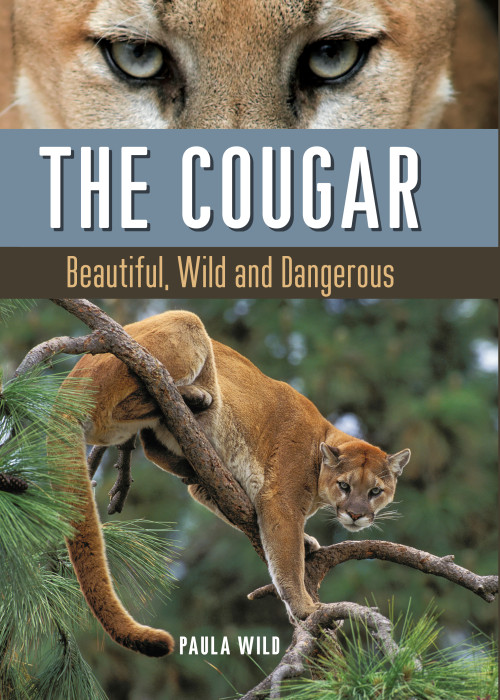
Long ago, cougars ranged from the Yukon to the tip of Patagonia and from coast to coast. Bounty hunting decimated their numbers in the first half of the 20th century but today many cougar populations, particularly in the Pacific Northwest, are considered healthy and stable. Some cougars are even migrating east into their former territory.
Like all predators, cougars play a vital role in a healthy ecosystem. For instance, the presence of a cougar keeps ungulates on the move preventing them from overgrazing an area. A landscape striped of vegetation can lead to soil erosion in streams, affecting fish, as well the bears, birds and other animals that feed on them. The ripple effect of eliminating predators affects nature in ways most of us never even consider.
Although attacks against humans are rare, cougars are opportunistic predators. Wherever they exist, there is some element of risk to pets, livestock and people. Research shows, however, that there are many ways to prevent an encounter from becoming an attack and an attack from becoming a fatality. For people living, working or traveling in cougar habitat, understanding the way the predator behaves and knowing how to respond is just as important as teaching young children how to navigate a busy street.
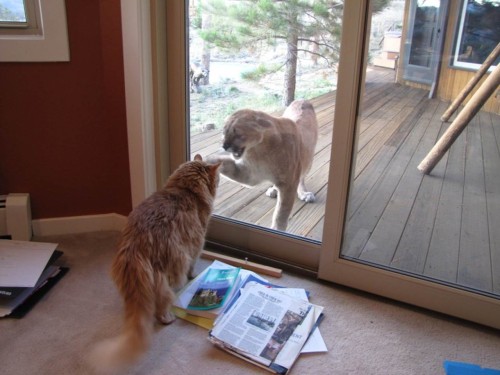 A Maine Coon house cat and a cougar go nose to nose at a sliding glass door near Boulder, Colorado. Photo by Gail Loveman.
A Maine Coon house cat and a cougar go nose to nose at a sliding glass door near Boulder, Colorado. Photo by Gail Loveman.
* * *
The Cougar: Beautiful, Wild and Dangerous is a BC Bestseller and is shortlisted for the 2014 BC Book Prizes Bill Duthie Booksellers’ Choice Award (Canada) and Foreword Reviews Book of the Year Award in Non-fiction-Nature (USA). It contains 70 photographs, including a 16-page color insert.
If you are unable to attend the reading at Village Books, Wild will also be presenting at the following Washington locations:
June 6: Port Townsend at the City Council Chambers, 540 Water St. at 7 pm.
June 7: Seattle at the Burke Museum of Natural History at 1 pm.


